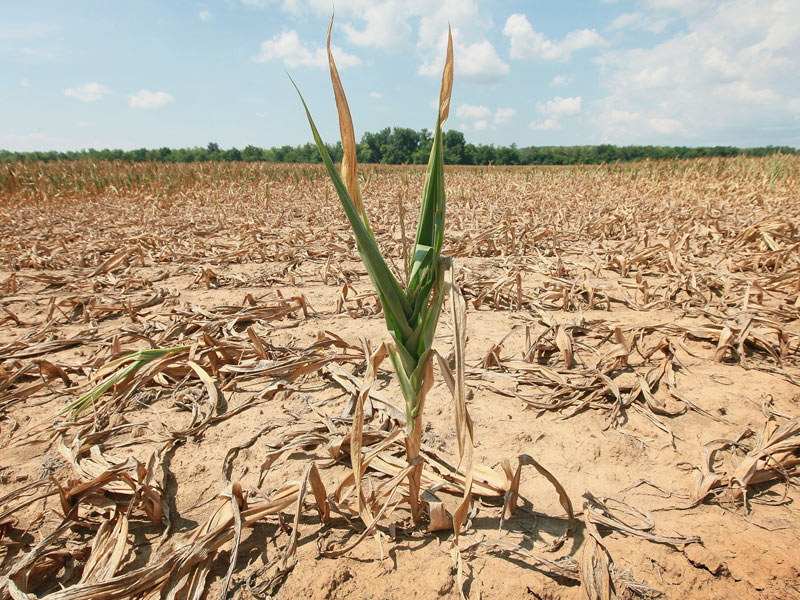Leaf Relative Water Content (RWC)
Relative water content (RWC) is probably the most appropriate measure of plant water status in terms of the physiological consequence of cellular water deficit. Water potential as an estimate of the energy status of plant water is useful in dealing with water transport in the soil-plant-atmosphere continuum. However, it does not account for osmotic adjustment (OA). OA is a powerful mechanism of conserving cellular hydration under drought stress and RWC expresses also the effect of OA in this respect. For the same leaf water potential two different cultivars can have different leaf RWC, indicating a corresponding difference in leaf hydration, leaf water deficit and physiological water status. Hence RWC is an appropriate estimate of plant water status in terms of cellular hydration under the possible effect of both leaf water potential and OA.
The method has long been in use, even before its re-examination (Barrs and Weatherley, 1962), when it was termed ‘relative turgidity’. It gained increasing appreciation with time and experience. Some exemplary uses and discussions of RWC in physiological as well breeding research can be found on this web site ‘Reference Database’ ID numbers 1903, 2181, 3418, 3813, 3883, 3940 and 4793. Searching for keyword RWC will provide many more recent studies where this measurement has been used.
The method is simple and this is one more advantage. It estimates the current water content of the sampled leaf tissue relative the maximal water content it can hold at full turgidity. Normal values of RWC range between 98% in fully turgid transpiring leaves to about 30-40% in severely desiccated and dying leaves, depending on plant species. In most crop species the typical leaf RWC at around initial wilting is about 60% to 70%, with exceptions.
The protocol
All components of leaf water relations change during the day as irradiance and temperatures change. For no more than two hours at and after solar noon, the change is very small. This is the time “window” for leaf sampling, unless a daily curve of RWC is of interest.
Usually, between 4 to 6 samples (replications) are taken from a single treatment or genotype. Each sample represents a different plant, if possible. Top-most fully expanded leaves are sampled, unless the interest is in profiling leaves on the plant. In large broad-leaves (sunflower, cotton, etc) leaf discs are cut from the leaves, to obtain a total of about 5-10 cm2/sample. Sample size does not have to be the same for all samples. Avoid large veins. Leaf discs should be large enough (around 1.5 cm in diameter) so as to reduce the area of cut leaf surface/sample. Various leaf disc cutters were designed by laboratories and might be available commercially. Alternatively, a sharp cork borer may be used, cutting the leaf over a piece of dense rubber or a large rubber stopper. It is important that sampling will proceed quickly. In smaller composite leaves (groundnuts, alfalfa, clover, chickpeas) several leaflets make up a fast and convenient sample. In cereals, a sample may constitute of a mid-leaf section of about 5-10 cm2 cut with scissors. With larger leaves such as maize or sorghum a section measuring, say, about 1×7 cm can be cut with scissors from the area between the mid-vein and the edge.
Each sample is placed in a pre-weighed airtight (possibly also oven proof) vial. Cereal leaf sample should be placed in a vial slightly longer than the sample, with its basal part to the bottom. Vials should be immediately placed in a picnic cooler (around 100C-150C) but not frozen on ice. Samples should reach the lab as soon as possible. This is why leaf sampling should be done quickly and it is important to enlist as much help as possible for the job.
In the Lab vials are weighed to obtain leaf sample weight (W), after which the sample is immediately hydrated to full turgidity for 3-4h under normal room light and temperature. Some prefer to hydrate samples on the lower shelf of a lab refrigerator (about 100C). Leaf discs and small leaflets are usually hydrated by floating on de-ionized water in a closes petri dish. Cereal leaf samples receive water into the vial to a level of 1-2 cm after which the vial is capped. Research by Arndt et al. (2015) indicated that rehydration by floating leaf discs on water can produce errors in RWC estimate due to excess apoplastic water influx. Rather than floating the leaf samples on water as suggested by the classical method it is advised to reduce error by allowing rehydration through a leaf petiole or as described above for a cereal leaf section.
After hydration the samples are taken out of water and are well dried of any surface moisture quickly and lightly with filter/tissue paper and immediately weighed to obtain fully turgid weight (TW). Samples are then oven dried at 800C for 24h and weighed (after being cooled down in a desiccator) to determine dry weight (DW). All weighing is done to the nearest mg. Calculation:
RWC (%) = [(W-DW) / (TW-DW)] x 100,
Where,
W – Sample fresh weight
TW – Sample turgid weight
DW – Sample dry weight.
With good and careful work, the method should normally result in about 2% to 3% of RWC being a statistically significant difference between treatments.
Reference
Barr, H.D. and Weatherley, P.E. 1962. A re-examination of the relative turgidity technique for estimating water deficit in leaves. Aust. J. Biol. Sci. 15:413-428.








